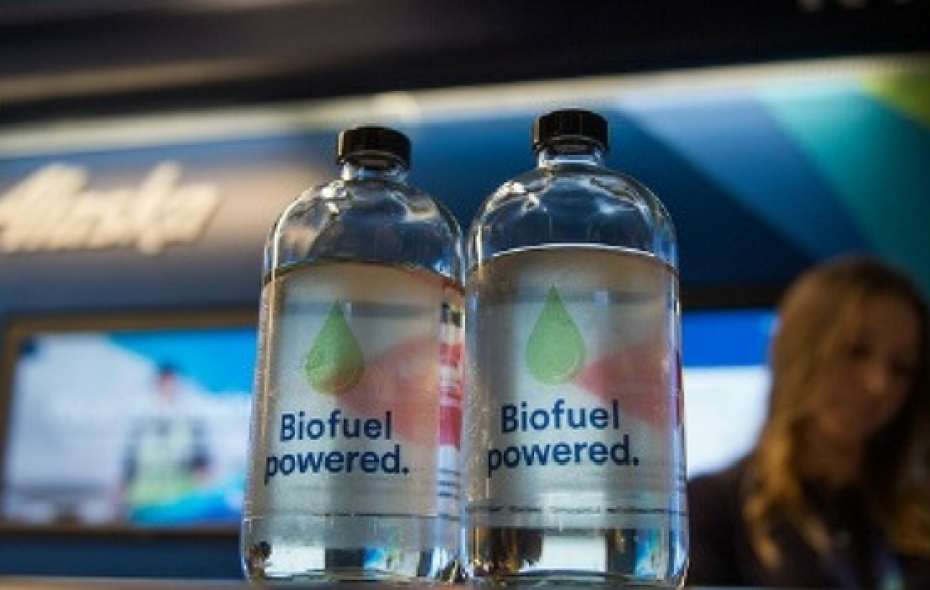
Alaska Airlines and the Washington State University-led Northwest Advanced Renewables Alliance (NARA) made history on 14 November 2016 by flying the first commercial flight using 20% cellulosic renewable alcohol to jet (ATJ) fuel made from waste wood using engineering biology.
Airline travel is a huge consumer of fossil fuels, but one of the challenges of creating biofuel from crops is that it uses land that could otherwise be used to grow human and animal food. US renewable chemicals and biofuels company Gevo, a member of NARA, used extracted cellulosic sugars from the waste wood left after harvesting timber (known as forest residuals or slash piles) that was supplied by NARA. The company converted these sugars into isobutanol using an engineered yeast developed to produce the cellulosic renewable at very high yields, and then converted the isobutanol into jet fuel. Isobutanol can also be used to produce fully renewable PET plastic, as well as butyl rubber and polyester.
“This first of its kind flight demonstrates Gevo’s commitment and ability to convert next generation cellulosic feedstocks into fungible hydrocarbons. We are pleased that we had the opportunity to prove, through the NARA project, that cellulosic sugars from wood can be used to successfully make commercial jet fuel," says Pat Gruber, Gevo’s CEO.
The flight followed previous commercial flights powered by biofuel from Gevo made using a sustainable corn-based sugar feedstock. Alaska Airlines estimated that the use of biofuel on these two demonstration flights was estimated to cut the greenhouse gas emissions by around 50%. If Alaska Airlines could replace 20% of its fuel at Seattle-Tacoma airport with biofuel, this could reduce greenhouse gas emissions by around 142,000 metric tonnes of CO2.